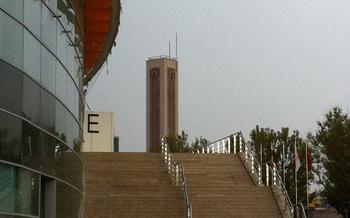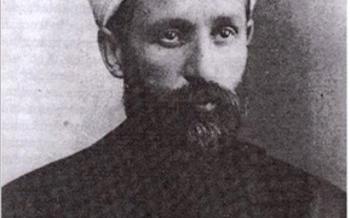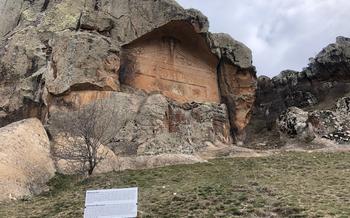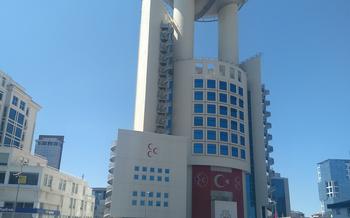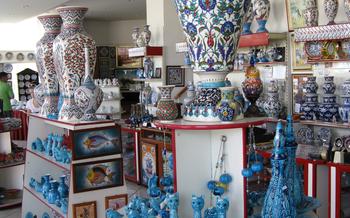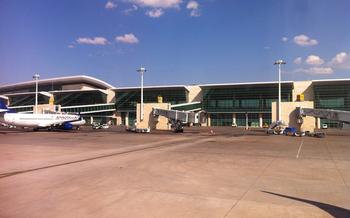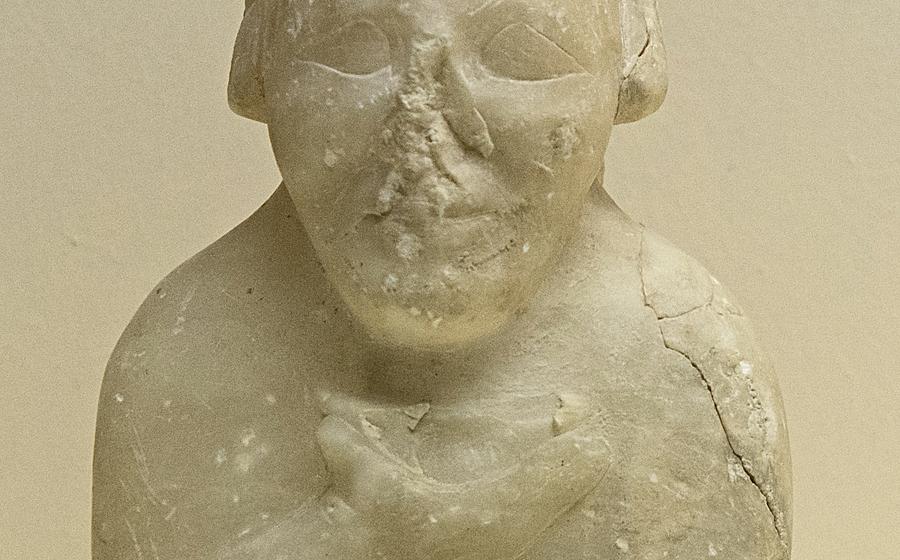
Gordion Museum
- Gordion Museum: A Journey Through Phrygian History
- Unveiling the Masterpieces of Gordion
- Witnessing Ancient Craftsmanship
- Immersive Multimedia Experience
- Midas' Throne: A Symbol of Power
- Royal Tombs and Burial Customs
- Interactive Activities for Kids
- Temporary Exhibitions and Events
- Museum Shop: Unique Souvenirs
- Photography and Social Media: Sharing the Wonders of Gordion
- Conservation Efforts: Preserving History
- Insider Tip: Hidden Treasures
Gordion Museum: A Journey Through Phrygian History
Journey back in time to the ancient kingdom of Phrygia at the Gordion Museum, a treasure trove of Phrygian history and culture. Located in Yassıhöyük, just 90 kilometers from Ankara, the museum stands on the site of the ancient city of Gordion, once the capital of Phrygia. Immerse yourself in the fascinating world of the Phrygians, an enigmatic civilization that played a significant role in shaping the history of Anatolia.
The Gordion Museum is housed in a striking modern building, designed to blend seamlessly with the surrounding landscape. Its innovative architecture creates a unique and immersive experience, drawing visitors into the rich history of Phrygia. As you explore the museum's galleries, you'll discover a wealth of artifacts and exhibits that shed light on the Phrygian civilization, its intricate social structure, and its remarkable cultural achievements.
Unveiling the Masterpieces of Gordion
The Gordion Museum houses a treasure trove of artifacts that provide a glimpse into the artistry and craftsmanship of the Phrygian civilization. Among the highlights is the Midas Tumulus, an impressive burial mound that yielded a wealth of gold jewelry and other precious objects. The intricate gold jewelry, with its delicate filigree work and vibrant gemstones, is a testament to the skill and artistry of Phrygian goldsmiths. Exquisite bronze and iron works, including intricate figurines, weapons, and tools, further showcase the Phrygian mastery of metalworking.
Of particular significance is the Gordion Knot, a legendary symbol that has captivated imaginations for centuries. Discovered within the Midas Tumulus, the knot is believed to have been tied by King Midas himself. According to legend, whoever could untie the knot would become the ruler of all Asia. While the exact meaning of the knot remains a mystery, it stands as an enduring symbol of the Phrygian civilization and its rich cultural heritage.
Witnessing Ancient Craftsmanship
The Gordion Museum offers a unique opportunity to witness the revival of ancient Phrygian crafts. Skilled artisans, using traditional techniques passed down through generations, demonstrate their mastery in pottery making, weaving, and metalworking. Visitors can observe these artisans as they create intricate ceramic pieces adorned with Phrygian motifs, weave colorful textiles using ancient looms, and forge elegant metal objects with precision and skill.
These demonstrations provide a fascinating glimpse into the daily life and artistic traditions of the Phrygians. Visitors can learn about the tools and materials used by these ancient artisans and gain an appreciation for their exceptional craftsmanship. Interactive workshops and classes are also available, allowing visitors to try their hand at these ancient crafts and create their own unique souvenirs.
Immersive Multimedia Experience
The Gordion Museum embraces the latest technology to create an immersive and interactive experience for visitors. State-of-the-art multimedia presentations bring history to life, with stunning visuals, captivating narrations, and engaging animations. Interactive displays and touchscreens allow visitors to explore the museum's collection in depth, providing detailed information and insights into the Phrygian civilization.
3D models and animations offer a unique perspective on the Gordion site, enabling visitors to virtually navigate the ancient city and its surroundings. These interactive features enhance the museum experience, making it both educational and enjoyable for visitors of all ages.
The museum also utilizes augmented reality and virtual reality technologies to create immersive experiences that transport visitors back in time. Through these cutting-edge technologies, visitors can explore the Phrygian world in a truly immersive way, gaining a deeper understanding of their history, culture, and way of life.
Midas' Throne: A Symbol of Power
Among the captivating treasures of the Gordion Museum, the majestic Midas' Throne stands out as an emblem of Phrygian kingship and authority. This awe-inspiring throne, carved from a single block of limestone, showcases the exquisite craftsmanship and intricate designs that characterized Phrygian artistry. Its elegant form and elaborate ornamentation speak to the power and prestige of the Phrygian rulers who once graced its seat.
Historians believe that the throne belonged to King Midas, the legendary ruler of Phrygia whose name has become synonymous with wealth and the golden touch. The throne's elaborate carvings depict scenes of royal processions, mythological creatures, and intricate floral motifs. Each detail is meticulously crafted, reflecting the high level of skill and artistry that the Phrygians possessed.
Beyond its historical significance, Midas' Throne holds a special place in mythology. According to legend, it was on this very throne that King Midas made his ill-fated wish to the god Dionysus, asking for the power to turn everything he touched into gold. Dionysus granted his wish, but Midas soon realized the folly of his desire as everything he cherished, including his beloved daughter, turned into gold.
Today, Midas' Throne stands as a testament to the grandeur and opulence of the Phrygian civilization. Its presence within the Gordion Museum invites visitors to contemplate the power, wealth, and mythology that surrounded the Phrygian kings of ancient Anatolia.
Royal Tombs and Burial Customs
The Gordion Museum houses a fascinating collection of Phrygian tombs, offering insights into the burial practices and afterlife beliefs of this ancient civilization. Explore elaborate tombs adorned with intricate carvings and frescoes, showcasing the wealth and power of the Phrygian elite. Discover the significance of grave goods, such as jewelry, pottery, and weapons, which accompanied the deceased on their journey to the afterlife. Compare Phrygian burial customs with those of other ancient civilizations, highlighting similarities and differences. Learn about the rich symbolism and rituals associated with death and burial, providing a glimpse into the spiritual beliefs of the Phrygians.
Interactive Activities for Kids
At the Gordion Museum, history comes alive for young minds through a plethora of engaging and educational activities designed specifically for children. Interactive games and quizzes captivate their attention, transforming learning into an exciting adventure. Storytelling sessions and workshops transport them to the past, immersing them in the captivating tales of Phrygian life and culture. Hands-on experiences, such as pottery making and weaving, allow them to connect with the ancient world in a tangible way, fostering a deeper appreciation for Phrygian craftsmanship. The Gordion Museum is not just a place of artifacts and exhibits; it is a vibrant space where children can explore, discover, and create, igniting their curiosity and passion for history.
Temporary Exhibitions and Events
The Gordion Museum continuously hosts temporary exhibitions and events that delve deeper into the captivating world of Phrygian culture. These exhibitions showcase new discoveries, shed light on specific aspects of Phrygian history, and provide a platform for collaboration with other museums and institutions. Visitors can expect to encounter thematic events, workshops, lectures, and interactive activities that bring Phrygian culture to life in engaging and immersive ways. These events offer a unique opportunity to gain specialized knowledge, participate in hands-on experiences, and interact with experts in the field. By attending these temporary exhibitions and events, visitors can broaden their understanding of Phrygian civilization and immerse themselves in its rich cultural tapestry.
Museum Shop: Unique Souvenirs
The Gordion Museum houses a well-curated shop that offers a plethora of unique and authentic souvenirs for visitors to cherish their experience. From exquisite replicas of Phrygian artifacts to intricately crafted souvenirs, the gift shop is a treasure trove for history enthusiasts and souvenir collectors alike.
Visitors can browse a wide selection of handcrafted items inspired by Phrygian designs, including pottery, jewelry, and textiles. These pieces not only serve as beautiful mementos but also help support local artisans who keep traditional Phrygian crafts alive.
The shop also offers an array of educational materials, such as books, postcards, and brochures, that delve deeper into the history and culture of the Phrygians. These publications provide visitors with a lasting resource to continue their exploration beyond the museum walls.
Whether you're looking for a unique gift for a loved one, a special memento to remember your trip, or educational materials to enhance your knowledge of the Phrygians, the Gordion Museum shop has something for everyone.
Photography and Social Media: Sharing the Wonders of Gordion
As you explore the Gordion Museum, don't forget to capture the captivating moments and stunning artifacts through the lens of your camera. Photography is allowed in most areas of the museum, providing an opportunity to document your journey through Phrygian history. Share your experiences with the world on social media, using relevant hashtags and geotags to connect with fellow history enthusiasts and travelers. Inspire others to discover the treasures of Gordion by showcasing the museum's highlights and hidden gems. Your social media posts can serve as a digital time capsule, preserving memories of your visit and encouraging others to embark on their own adventure into the past.
Conservation Efforts: Preserving History
The Gordion Museum plays a crucial role in preserving the rich cultural heritage of the Phrygian civilization. Dedicated conservation and restoration projects are continuously carried out to protect the priceless artifacts and ensure their longevity. The museum collaborates closely with national and international organizations to implement best practices and share knowledge in heritage preservation.
Skilled conservators work tirelessly behind the scenes to restore and maintain the integrity of the artifacts. From delicate gold jewelry to monumental sculptures, each piece receives meticulous care and attention to detail. The museum's commitment to conservation extends beyond its own collection, as it actively participates in regional and international conservation initiatives.
By supporting and engaging in these efforts, the Gordion Museum ensures that the legacy of the Phrygian civilization continues to live on and inspire future generations. Visitors can contribute to these endeavors by following museum guidelines, handling artifacts with care, and respecting the historical significance of the site.
Insider Tip: Hidden Treasures
Beyond the main exhibits, the Gordion Museum holds hidden treasures that offer a deeper glimpse into the Phrygian world. Venture off the beaten path to discover lesser-known artifacts and secret spots that often go unnoticed. Look for a small, unassuming doorway leading to a hidden chamber where you'll find a collection of exquisite gold jewelry and intricate bronze works that have been carefully preserved. In another secluded corner, you may stumble upon a replica of the Phrygian village, where costumed interpreters demonstrate ancient crafts and traditions, providing a unique hands-on experience. Don't miss the opportunity to climb to the rooftop terrace for a breathtaking panoramic view of the museum grounds and the surrounding landscape, offering a fresh perspective on the Phrygian kingdom. These hidden gems will enhance your visit and leave you with a lasting impression of the Gordion Museum's rich collection and captivating stories.
